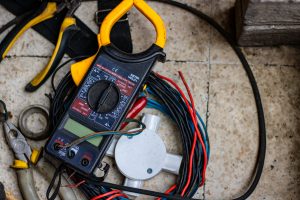 Rewiring is one of the most difficult, messy, and disruptive maintenance projects you can perform in the home. It is equally time-consuming and costly but very necessary. The lifespan of the electrical installation in a home is usually 25 years. However, this duration can vary depending on use. The electrical system will have to be inspected every 10 years if it is in a privately owned property or every 5 years for a rented property. This inspection guarantees electrical safety.
Rewiring is one of the most difficult, messy, and disruptive maintenance projects you can perform in the home. It is equally time-consuming and costly but very necessary. The lifespan of the electrical installation in a home is usually 25 years. However, this duration can vary depending on use. The electrical system will have to be inspected every 10 years if it is in a privately owned property or every 5 years for a rented property. This inspection guarantees electrical safety.
There are several reasons a homeowner or property investor might consider rewiring a house:
- You may want to sell an old home and decide a full house rewire is a great way to add value to the property.
- You may have hired an electrician for a routine inspection and discovered that your electrical system is less than ideal.
- You may buy an older home and want to be sure of safe and dependable electricity.
- You may be experiencing tell-tale signs such as flickering lights, warm outlets, mild electrical shocks, dimming lights, tripping switches, blown fuses, and more.
- You may be carrying out a renovation project.
Whatever your reasons for a house rewire, it is important to know what it involves and what to do or expect.
The Cost
The truth is, a full house rewire doesn’t come cheap. If you consider only the costs first and opt for lower quality service, you may place lives and property in danger. A house rewire must be carried out the right way.
The Process
Usually, this rewiring project may take up to four or five days to complete. The size of your home and the number of electricians working may also influence the time it takes to be completed. The first step for all electricians is to inspect and prepare the property. The wiring in your home is set in the ceiling, behind the walls, and within the floorboards. All of these need to be assessed and exposed to work on. You will also be asked to specify any preferences for outlets. Anything that stands between your wiring and the electricians will be taken down to gain access. This is what makes rewiring disruptive and messy.
The first work stage of the house rewiring process is called the first fix. It involves installing new wiring, cabling, back boxes, and circuits. The lighting and socket positions are labeled to make the second fix stage easier. The second fix stage commences after the first fix and it involves the installation of light fittings, socket fronts, light switches, and isolation switches. Next, the consumer unit is set up and connected to the new wiring system. After this step, your new electrical system will be live but a professional electrician won’t leave just yet. They will proceed to test everything and ensure it meets with electrical standards.
At The Electric Connection we follow this procedure thoroughly and work to make things easier for you. We are quick and professional. We guarantee a safe electrical system that adds value and convenience to your home.




